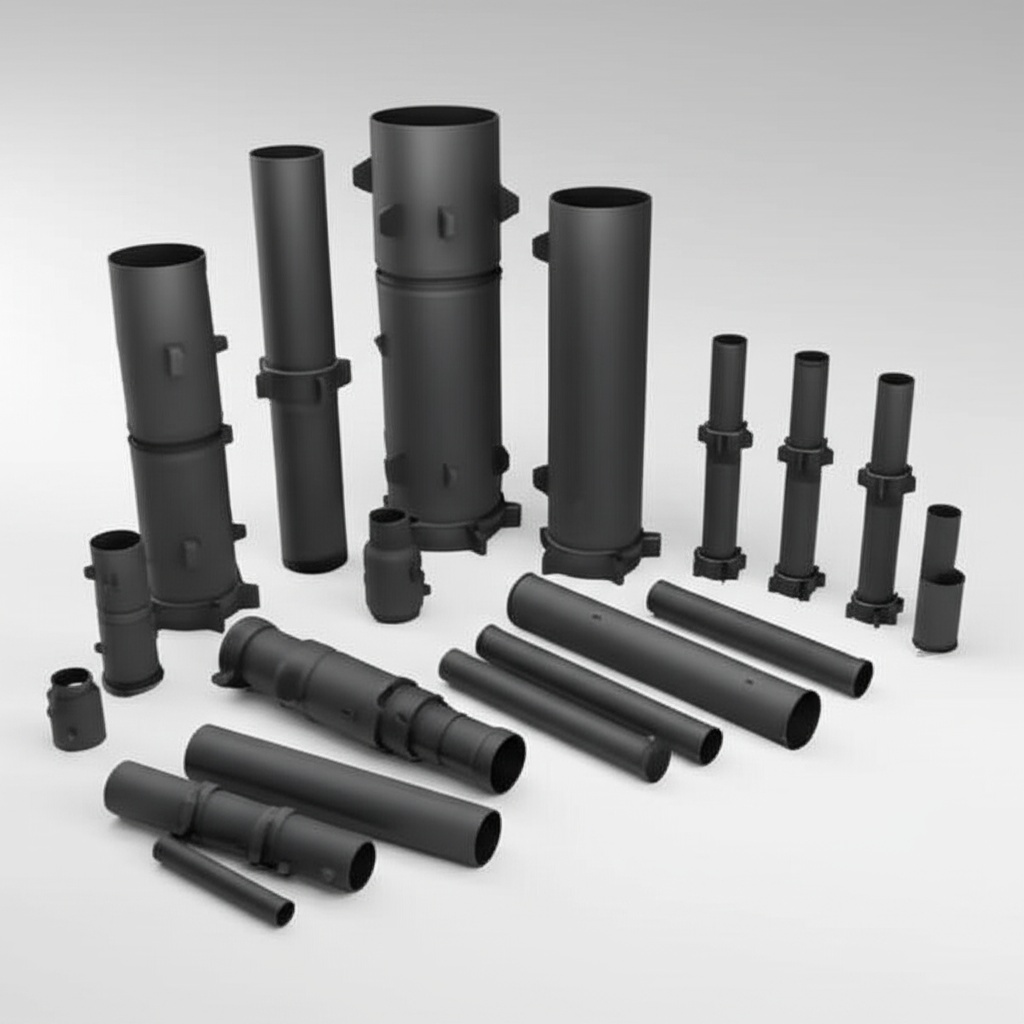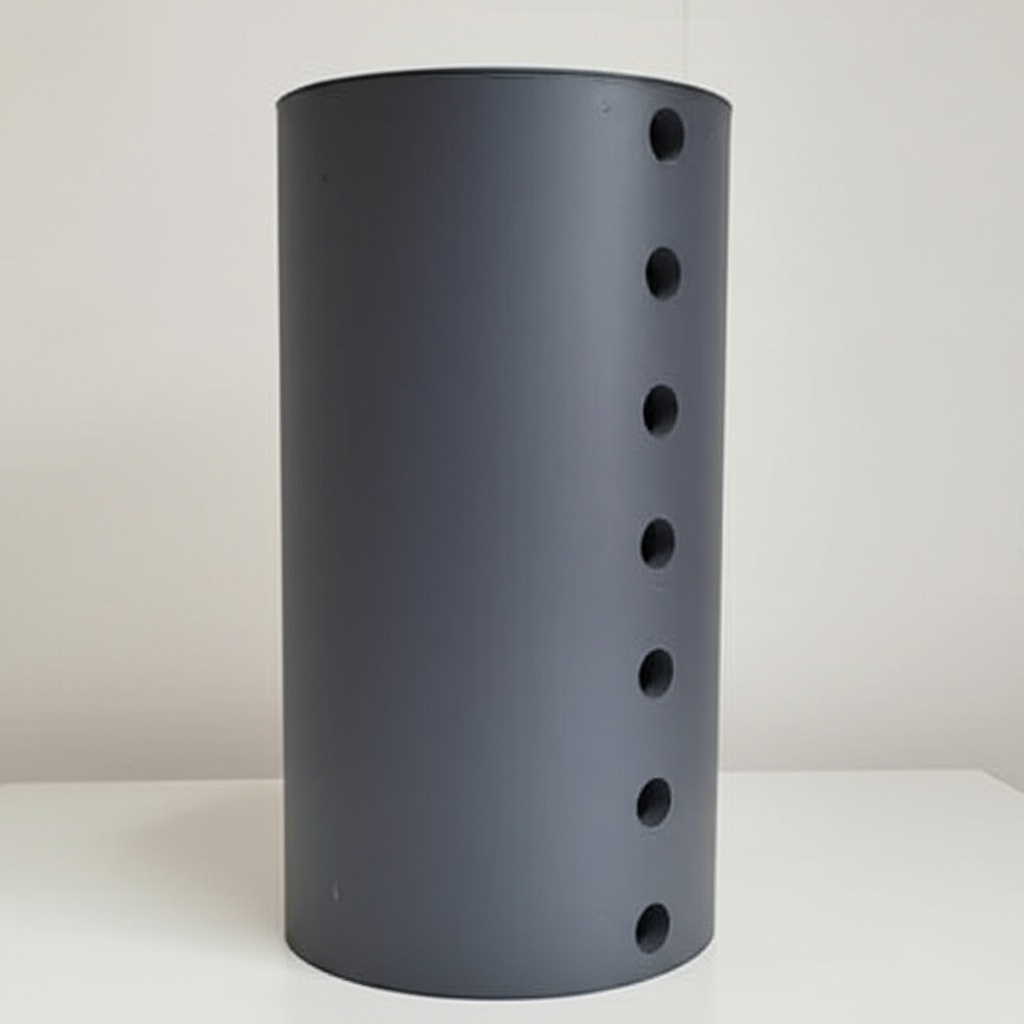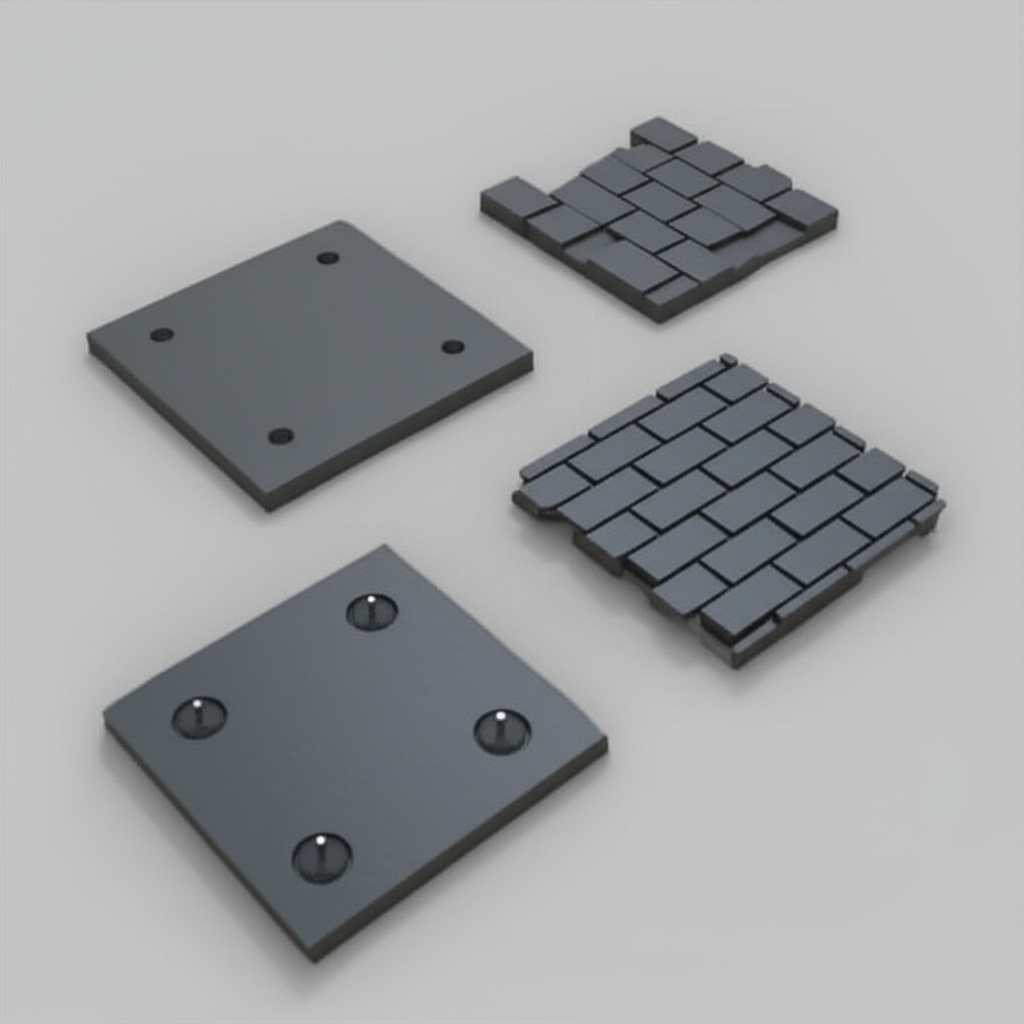Russia’s SiC Market: An Overview of Opportunities

Share
The global demand for advanced materials continues to soar, driven by rapid technological advancements across diverse industries. Among these, **Silicon Carbide (SiC)** stands out as a material of paramount importance, particularly in high-performance applications where extreme conditions are the norm. This blog post delves into the burgeoning **SiC market in Russia**, exploring the significant opportunities it presents for various sectors, from semiconductors to energy. We will also highlight the critical role of **custom silicon carbide products** and the expertise required to leverage their full potential.
The Growing Importance of Silicon Carbide in Modern Industries
Silicon Carbide is a compound of silicon and carbon, renowned for its exceptional properties that include extreme hardness, high thermal conductivity, low thermal expansion, excellent chemical inertness, and superior high-temperature strength. These characteristics make SiC an ideal material for environments where conventional materials fail. Its application is rapidly expanding beyond traditional uses into cutting-edge technologies, driving demand for specialized **SiC components** and **advanced ceramic materials**.
Main Applications of Silicon Carbide Across Key Industries
The versatility of SiC allows its integration into a multitude of demanding applications across a broad spectrum of industries. Understanding these applications is crucial for businesses looking to capitalize on the **SiC market growth**.
| Industry Sector | Key SiC Applications | Benefits of SiC |
|---|---|---|
| Semiconductors | Power devices (MOSFETs, diodes), high-frequency electronics, integrated circuits, SiC wafers, SiC substrates | Higher power efficiency, superior thermal management, reduced energy losses, smaller device footprints |
| Automotive | EV inverters, on-board chargers, DC-DC converters, motor drive systems, braking systems, engine components | Increased range for EVs, faster charging, enhanced reliability, improved fuel efficiency, reduced emissions |
| Aerospace & Defense | High-temperature sensors, engine components, thermal management systems, missile radomes, optical mirrors, lightweight structures | Extreme temperature resistance, lightweighting, high stiffness, superior thermal stability, erosion resistance |
| Power Electronics | Power modules, inverters for solar and wind energy, industrial motor drives, uninterruptible power supplies (UPS) | Higher power density, increased efficiency, improved reliability, reduced system size and weight |
| Renewable Energy | Solar inverters, wind turbine converters, energy storage systems, grid infrastructure | Enhanced energy conversion efficiency, extended system lifespan, reduced maintenance costs |
| Metallurgy & Industrial Manufacturing | Furnace components, crucibles, nozzles, heat exchangers, wear parts, abrasive tools, grinding media | Exceptional wear resistance, high-temperature stability, corrosion resistance, prolonged equipment lifespan |
| Chemical Processing | Pump components, valve seats, heat exchangers, piping in corrosive environments | Outstanding chemical inertness, resistance to harsh acids and alkalis, reduced contamination |
| LED Manufacturing | LED substrates, epitaxy wafers | Excellent thermal conductivity, lattice matching for superior LED performance |
| Medical Devices | Surgical instruments, implants (experimental), high-temperature sterilization equipment | Biocompatibility, wear resistance, chemical inertness |
| Telecommunications | High-frequency components, base station power amplifiers | Improved signal integrity, high-temperature operation, robust performance |
Why Choose Custom Silicon Carbide Products?
While standard SiC components are available, many high-performance applications require parts tailored to specific design and operational parameters. This is where **custom silicon carbide products** become indispensable. The benefits of opting for custom solutions are significant:
- Optimized Performance: Custom designs ensure the SiC component precisely meets the demanding thermal, mechanical, and electrical requirements of a specific application, maximizing efficiency and longevity.
- Enhanced Durability: Tailored designs can account for unique stress points, temperature gradients, and chemical exposures, leading to components with superior wear resistance and extended service life.
- Complex Geometries: Custom manufacturing allows for the creation of intricate shapes and complex geometries that would be impossible with standard off-the-shelf components, enabling innovative product designs.
- Cost-Effectiveness in the Long Run: Although initial investment might seem higher, custom parts often lead to significant long-term savings by reducing downtime, improving system efficiency, and minimizing replacement costs.
- Unique Material Compositions: Customization extends to material compositions, allowing for specific grades and additives to be incorporated to achieve desired properties like electrical conductivity, specific thermal expansion, or enhanced fracture toughness.
For procurement managers and technical buyers, investing in **custom silicon carbide components** is a strategic decision that can lead to superior product performance and a competitive edge.
Recommended SiC Grades and Compositions for Industrial Applications
Silicon Carbide exists in various forms, each with unique properties suited for different applications. Understanding these grades is critical for effective **SiC engineering** and material selection:
- Reaction-Bonded Silicon Carbide (RBSC or SiSiC): This grade is produced by infiltrating a porous compact of SiC and carbon with molten silicon. The silicon reacts with the carbon to form additional SiC, binding the SiC particles together. RBSC offers good strength, excellent wear resistance, and high thermal conductivity. It’s often used for furnace components, nozzles, and structural parts where intricate shapes are needed.
- Sintered Silicon Carbide (SSiC): Produced by sintering fine SiC powder with small amounts of sintering aids at very high temperatures. SSiC is a dense, high-purity material with exceptional hardness, high strength, and excellent corrosion resistance. It is ideal for wear parts, mechanical seals, and high-temperature structural components.
- Nitride-Bonded Silicon Carbide (NBSC): Made by reacting silicon powder and silicon carbide grains with nitrogen gas. NBSC has a porous structure but offers good thermal shock resistance and chemical stability, making it suitable for kiln furniture and burner nozzles.
- Recrystallized Silicon Carbide (ReSiC): Formed by heating SiC powder to high temperatures, allowing for grain growth and bonding without a liquid phase. ReSiC offers good thermal shock resistance and high purity, making it suitable for high-temperature furnace applications.
The choice of SiC grade depends heavily on the specific operational environment and required properties, highlighting the importance of collaborating with experienced **SiC manufacturing** specialists.
Design Considerations for Custom SiC Products
Designing with SiC requires a deep understanding of its unique material properties and manufacturing processes. Engineers must consider several factors to ensure optimal performance and manufacturability of **technical ceramic components**:
- Geometry Limits: SiC is hard and brittle, making complex geometries challenging to machine. Designs should aim for simplicity where possible, avoiding sharp internal corners or very thin sections that are prone to cracking during manufacturing or in service.
- Wall Thickness: Uniform wall thickness is preferred to minimize thermal stresses during processing and operation. Variations in thickness can lead to differential cooling and potential cracking.
- Stress Points: Identify and minimize stress concentration points, such as sharp corners or sudden changes in cross-section. Radius corners and smooth transitions are crucial.
- Tolerances: While SiC can achieve high precision, specifying overly tight tolerances unnecessarily can increase manufacturing complexity and cost. Understanding achievable tolerances for different SiC grades and processes is essential.
- Machinability: Consider the machinability of the chosen SiC grade. Post-sintering machining of SiC is extremely difficult and costly, often requiring diamond grinding. Designs should aim for “near-net-shape” fabrication wherever possible.
Tolerance, Surface Finish & Dimensional Accuracy in SiC Manufacturing
Achieving precise dimensions and superior surface finishes is paramount for high-performance SiC components. The manufacturing process significantly influences these factors:
- Achievable Tolerances: Precision machining of SiC is challenging due to its hardness. Typical tolerances for SiC components often range from ±0.05 mm to ±0.1 mm, depending on the size and complexity of the part. Finer tolerances are achievable but usually require additional grinding or lapping, increasing cost.
- Surface Finish Options: SiC parts can be supplied with various surface finishes, from as-fired/as-sintered to fine ground or polished surfaces. A rougher finish is typical for less critical applications, while highly polished surfaces are essential for sealing applications, optical components, or wear parts requiring minimal friction.
- Dimensional Accuracy: Achieving high dimensional accuracy depends on the manufacturing method (e.g., slip casting, pressing, extrusion) and subsequent machining operations. For intricate parts, advanced CNC machining and grinding techniques are employed to meet stringent specifications.
Post-Processing Needs for Enhanced SiC Performance
Even after initial fabrication, certain post-processing steps can significantly enhance the performance and durability of **custom SiC products**:
- Grinding: Precision grinding with diamond wheels is often required to achieve tight dimensional tolerances and desired surface finishes.
- Lapping & Polishing: For applications requiring extremely smooth surfaces, such as mechanical seals or optical components, lapping and polishing operations are performed.
- Sealing & Impregnation: For porous SiC grades, impregnation with resins or glass can improve impermeability, beneficial for applications involving gases or liquids.
- Coating: Applying specialized coatings can further enhance properties like oxidation resistance, corrosion resistance, or reduce friction in specific environments.
- Brazing & Joining: SiC components can be joined to other materials or to other SiC parts using specialized brazing techniques, enabling the creation of complex assemblies.
Common Challenges in SiC Manufacturing and How to Overcome Them
While SiC offers numerous advantages, its unique properties present certain manufacturing challenges that require specialized expertise:
- Brittleness: SiC is inherently brittle, making it susceptible to chipping and cracking during machining and handling. Overcoming this requires precise control over machining parameters and careful handling.
- Machining Complexity: Its extreme hardness makes SiC very difficult to machine, primarily requiring diamond tooling and specialized grinding equipment. This drives up manufacturing costs and lead times.
- Thermal Shock Sensitivity: Although SiC has good thermal shock resistance compared to many ceramics, rapid and extreme temperature changes can still cause cracking. Design considerations, such as minimizing sharp edges and ensuring uniform heating/cooling, can mitigate this.
- High Sintering Temperatures: Producing dense SiC components requires very high sintering temperatures (above 2000°C), demanding specialized furnaces and precise temperature control.
Addressing these challenges effectively requires a manufacturer with extensive experience and advanced capabilities in **SiC processing** and **advanced ceramic materials**.
How to Choose the Right Silicon Carbide Supplier
Selecting a reliable supplier for **custom SiC products** is crucial for ensuring product quality, timely delivery, and competitive pricing. Here are key factors to consider:
- Technical Capabilities: Assess the supplier’s expertise in SiC material science, design for manufacturability, and advanced machining techniques. Do they have in-house engineers capable of assisting with design optimization?
- Material Options & Grades: A good supplier will offer a range of SiC grades (e.g., SSiC, RBSC, NBSC) and be able to recommend the most suitable one for your specific application.
- Quality Certifications: Look for certifications such as ISO 9001, which indicate a commitment to quality management systems. Industry-specific certifications (e.g., aerospace, medical) are also valuable.
- Production Capacity & Lead Times: Ensure the supplier can meet your production volume requirements and provide realistic lead times.
- Experience & Track Record: Prioritize suppliers with a proven track record in manufacturing SiC components for industries similar to yours. Request case studies or references to evaluate their past performance.
- Customer Support & Collaboration: A responsive and collaborative supplier can be a valuable partner in the design and development process, providing technical insights and problem-solving assistance.
In this regard, we at Sicarb Tech stand as a trusted partner for your **custom silicon carbide** needs. As part of Chinese Academy of Sciences (Weifang) Innovation Park, an entrepreneurial hub closely collaborating with the National Technology Transfer Center of the Chinese Academy of Sciences , we leverage robust scientific and technological capabilities. We have been instrumental in assisting over 490 local enterprises in Weifang City – a region accounting for over 80% of China’s total SiC output – in achieving large-scale production and technological advancements. This strong foundation enables us to offer more reliable quality and supply assurance within China. Our domestic top-tier professional team specializes in customized production of silicon carbide products, possessing a wide array of technologies from material science to integrated product processes. We are dedicated to providing higher-quality, cost-competitive customized silicon carbide components. You can explore our successful cases to see our capabilities in action. Furthermore, if you are considering establishing a professional silicon carbide products manufacturing plant in your country, Sicarb Tech can provide comprehensive technology transfer, along with a full range of services including factory design, equipment procurement, installation, commissioning, and trial production. Learn more about our tech transfer support.
Cost Drivers and Lead Time Considerations for SiC Components
Understanding the factors that influence the cost and lead time of **custom silicon carbide products** is crucial for effective project planning and procurement:
- Material Grade: Different SiC grades have varying raw material costs and processing complexities. SSiC, for instance, generally costs more than RBSC due to its higher purity and demanding sintering requirements.
- Part Complexity & Size: Intricate geometries, tight tolerances, and larger component sizes necessitate more complex machining, specialized tooling, and longer processing times, all of which increase cost and lead time.
- Volume & Batch Size: Higher production volumes often lead to lower unit costs due to economies of scale in manufacturing. Smaller, custom batches typically incur higher per-unit costs.
- Surface Finish Requirements: Achieving a finer surface finish (e.g., lapping, polishing) adds significant cost and time to the manufacturing process.
- Post-Processing Needs: Any additional post-processing steps like coatings, impregnation, or complex assembly will add to the overall cost and lead time.
- Supplier’s Location & Expertise: The geographical location of the supplier and their specific expertise in SiC manufacturing can also influence pricing and delivery schedules. Leveraging the established manufacturing hub in Weifang, China, through partners like Sicarb Tech can offer cost-competitive solutions without compromising on quality.
Frequently Asked Questions (FAQ) about Silicon Carbide
Here are some common queries regarding silicon carbide and its applications:
Q1: What are the primary advantages of SiC over traditional silicon (Si) in power electronics?
A1: SiC offers several key advantages over silicon in power electronics, including a wider bandgap, higher thermal conductivity, higher breakdown electric field, and faster switching speeds. These properties enable SiC devices to operate at higher temperatures, higher frequencies, and higher voltages with significantly lower energy losses, leading to more compact, efficient, and reliable power systems. This is particularly critical for electric vehicles and renewable energy systems.
Q2: Is SiC brittle, and how does that affect its use in industrial applications?
A2: Yes, SiC is inherently a hard and brittle material, similar to other advanced ceramics. This characteristic means it has limited ductility and can be susceptible to fracture under sudden impact or high tensile stress. However, its exceptional hardness provides outstanding wear resistance. In industrial applications, designs must account for its brittleness by avoiding sharp corners, minimizing stress concentrations, and considering compressive loading wherever possible. Proper engineering design and material selection for specific applications can effectively mitigate the impact of its brittleness, leveraging its strengths for wear, high temperature, and chemical resistance.
Q3: Can SiC components be repaired or recycled?
A3: Repairing SiC components is generally challenging due to their extreme hardness and inertness. Minor surface damage might be addressed through grinding or polishing, but significant damage typically necessitates replacement. Recycling SiC is also complex. While some industrial waste SiC can be reprocessed for abrasive applications or as a raw material in steelmaking, recovering pure SiC for re-sintering into high-performance components is difficult and not yet widely economically viable. Research into more effective recycling methods for advanced ceramics is ongoing. We encourage you to contact us for specific inquiries about material options and end-of-life considerations for your SiC components.
Conclusion: The Strategic Value of Custom Silicon Carbide
The **Silicon Carbide market in Russia** and globally is poised for significant expansion, driven by the insatiable demand for high-performance materials in critical industries. From revolutionizing **power electronics** to enabling more efficient **aerospace components** and durable **industrial machinery**, **custom silicon carbide products** are at the forefront of this technological wave. By understanding the diverse applications, material properties, and critical design considerations, engineers, procurement managers, and technical buyers can make informed decisions that optimize performance and drive innovation. Partnering with a reputable and experienced **SiC supplier**, like Sicarb Tech, is essential to unlock the full potential of this extraordinary material and secure a competitive advantage in today’s rapidly evolving industrial landscape. Discover our full range of customization support and how we can assist your projects.

About the Author: Sicarb Tech
We provide clear and reliable insights into silicon carbide materials, component manufacturing, application technologies, and global market trends. Our content reflects industry expertise, practical experience, and a commitment to helping readers understand the evolving SiC landscape.



